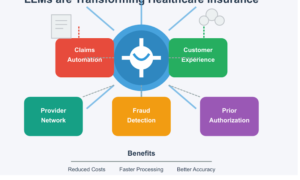Does your venture rely on a pool of vehicles and multiple vans? If that’s the case, it is important to have them covered under the right insurance policy. Depending on the number of vans, there are two primary types of coverage to pick from. The type of work and the size of your business are also factors that will play a role in determining the right policy.
-
Multi-Van Insurance
If you have between 2 and 5 vans, a multi-van policy proves to be the right coverage. Not all auto insurance companies provide fleet van insurance for less than five vehicles, but multi-van insurance comes with its pros and cons
The Benefits of Multi-Van Insurance
Having all your vans under a single policy, even if they are less than five is way better than having separate coverage and each with a different start and expiry date. A single policy helps reduce your administrative work. Another benefit is that each vehicle will accrue its own No Claims discount.
With multi-van insurance, you’ll be able to add vehicles to the policy as your business grows. In addition, the more vehicles you have, the higher the insurance premium discount.
The Downsides of Multi-Van Coverage
Multi-van insurance is usually costlier compared to fleet insurance and the discounts aren’t as appealing for many vehicles under the single policy. If you’re used to spreading the expense of insuring several vans throughout the year, having them renew at the same time can be a financial hurdle.
-
Fleet Insurance
If you have more than five vans in your company, then fleet insurance is often the best coverage, both in terms of cost and convenience.
The Benefits of Fleet Van Insurance
The most apparent pro of fleet insurance is the appealing quantity discount. That’s because the No Claims discount can be spread out through the vehicles.
Fleet van insurance is also highly flexible, particularly if you include the ‘’any driver cover’’ to the policy.
Similar to multi-van insurance, putting all your vans under a single policy eases your administrative tasks, particularly if you have an extremely large fleet.
The Downsides of Fleet Van Insurance
If you have a small fleet of vans, you are likely to get a lower and possibly less attractive quantity discount.
If you’ve employed young drivers, particularly those under 21, this will likely increase your insurance premium.
How flexible you need the coverage to be is another factor that will affect your insurance premium price. For instance, any driver insurance is bound to increase your premiums.
You will also need to look out for policy exclusions like using business vans for personal or private matters as this is sometimes excluded from fleet van policies.
Here is an excellent fleet insurance guide that will provide a few helpful pointers on keeping the cost of insuring your fleet as low as possible.
Whether you settle for fleet van insurance or multi-van coverage, the best option comes down to a number of factors including the drivers’ backgrounds and how good they are on the road, the types of vans in your business, and their level of maintenance.
Inexperienced or Young Drivers
If you’re dealing with young or inexperienced drivers, it is advisable to keep them to a lower ratio in comparison to older or more experienced ones. Diluting the perceived risk can go a long way in reducing the policy costs when it comes to coverage.
However, it is not just the driver’s age and experience that affects the cost of your fleet insurance premiums. Any driver with a conviction or penalty on their license is likely to increase the premiums as they are perceived as higher risk. The same applies to motorists who have been involved in accidents. Similar to young drivers, you will want to dilute the risk by employing more accident-free drivers.
On the contrary, if you have an especially accident-prone driver, they are bound to increase the cost across the entire fleet, especially if you have few vans. If that’s the case, your best option is to weigh up the advantages of removing the driver from fleet van insurance and get them their own policy.
Driver Ability & History
The price of insurance premiums is also dependent on your driver’s ability and history of driving. As such, it is advisable to use an incentive scheme in order to both reduce your insurance risk and reduce the cost of monthly premiums. By incentivizing your motorists with monthly reards when they drive and behave well on the road, you are likely to reduce your premiums and cut the expensive vehicle repair bills.
Another great way to help reduce the cost of fleet insurance is to implement technology in monitoring driving. Installing a black box for your vehicles, especially those operated by young drivers is likely to earn you an appealing discount. Most auto insurance companies will also provide a discount if you install dashboard cameras.
And there you have it, a closer look and guide for van insurance. Both multi-van and fleet van insurance policies come with their fair share of pros and cons and it all comes down to your needs and what works best for you.



































